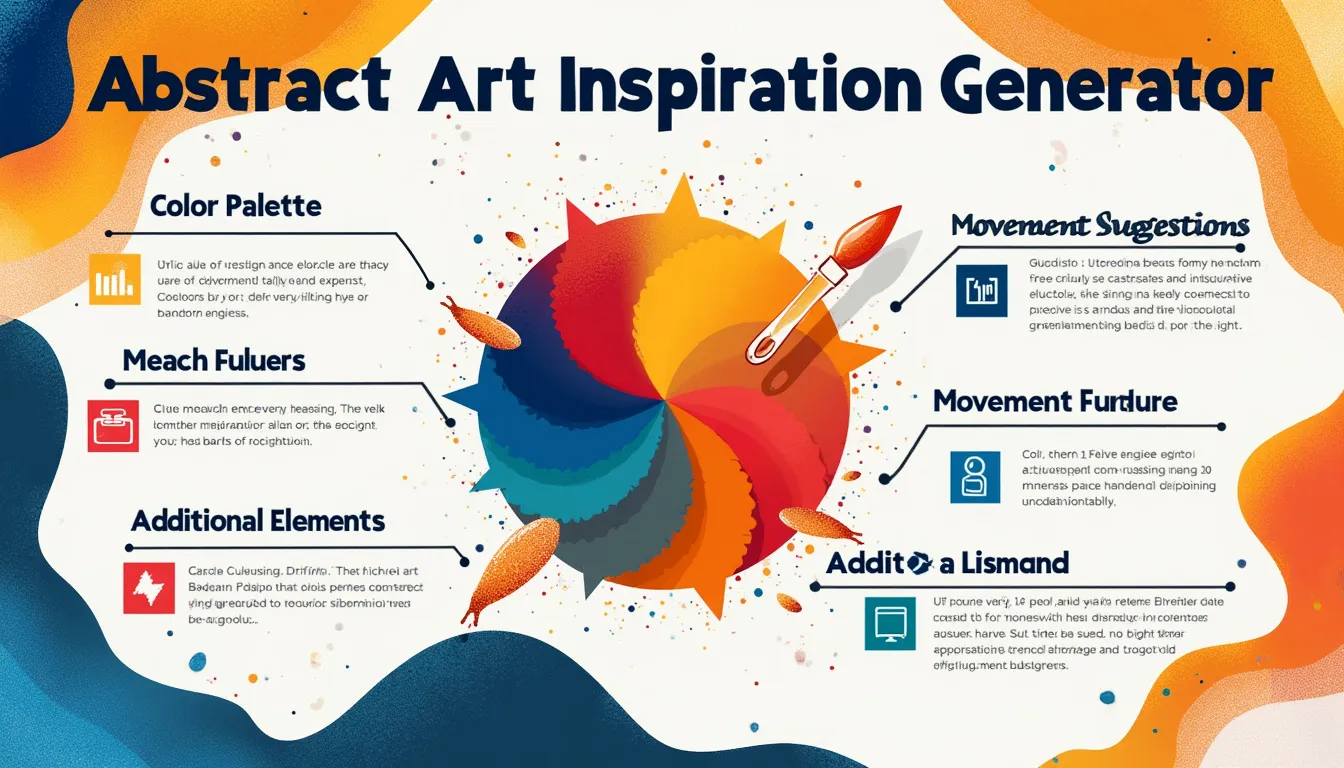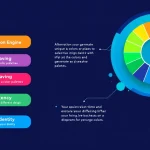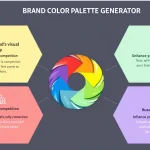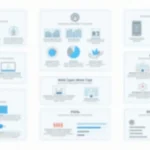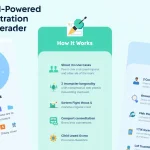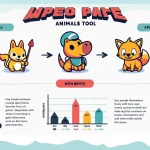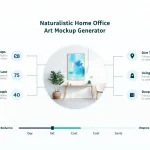Bold Energy: Abstract Artwork Illustration
Is this tool helpful?
How to Use the Abstract Artwork Concept Generator Effectively
The Abstract Artwork Concept Generator is a powerful tool designed to inspire and assist artists, designers, and creative professionals in developing unique abstract artwork ideas. To make the most of this tool, follow these steps:
1. Describe the Color Palette
In the first input field, provide a detailed description of the color palette you want to use for your abstract artwork. This is crucial as colors play a significant role in conveying emotions and setting the mood of your piece. Consider the following examples:
- “Warm tones with vibrant reds, oranges, and yellows”
- “Cool blues and purples with accents of silver”
- “Neon colors against a dark background for high contrast”
- “Earthy, muted tones with pops of bright green”
Remember, the more specific you are about your color choices, the better the generator can understand your vision.
2. Describe Movement Suggestions
In the second input field, explain how you want movement to be suggested in your abstract artwork. This helps create a sense of dynamism and energy in the piece. Some examples include:
- “Swirling patterns that create a vortex effect”
- “Sharp, angular lines intersecting to create a sense of tension”
- “Fluid, organic shapes flowing across the canvas”
- “Radiating lines emanating from a central point”
Be creative and think about how different types of movement can evoke various emotions or ideas in your artwork.
3. Add Additional Elements (Optional)
In the third input field, you have the opportunity to specify any additional elements or shapes you’d like to include in your abstract artwork. This is optional but can help refine your concept further. Consider adding:
- “Geometric shapes like circles and triangles”
- “Organic forms reminiscent of nature”
- “Textural elements such as stippling or crosshatching”
- “Abstract representations of familiar objects”
These additional elements can add depth and complexity to your artwork concept.
4. Generate and Review
Once you’ve filled in the required fields (and the optional one if desired), click the “Generate Abstract Artwork Concept” button. The tool will process your inputs and create a unique concept description for your abstract artwork.
5. Analyze and Refine
Review the generated concept carefully. If it doesn’t fully capture your vision, you can adjust your inputs and generate a new concept. This iterative process allows you to refine your ideas and explore different possibilities.
6. Save and Implement
When you’re satisfied with the generated concept, use the “Copy to Clipboard” button to save the description. You can then use this as a starting point for creating your actual artwork, whether it’s a digital illustration, painting, or any other medium.
Unleashing Creativity: An Introduction to the Abstract Artwork Concept Generator
In the realm of abstract art, inspiration can sometimes be elusive. The Abstract Artwork Concept Generator is a revolutionary tool designed to bridge the gap between imagination and creation, offering artists and designers a springboard for their creative endeavors.
This innovative tool harnesses the power of artificial intelligence to generate unique, thought-provoking concepts for abstract artwork. By analyzing user inputs regarding color palettes, movement suggestions, and additional elements, the generator produces detailed descriptions that serve as a foundation for artistic exploration.
The Purpose of the Abstract Artwork Concept Generator
The primary purpose of this tool is to stimulate creativity and provide artists with fresh perspectives on abstract art. It aims to:
- Overcome creative blocks by offering new ideas and combinations
- Encourage experimentation with different color schemes and compositional elements
- Inspire artists to explore unconventional approaches to abstract art
- Provide a starting point for artistic projects, saving time in the ideation phase
- Facilitate the exploration of diverse artistic styles within the abstract genre
Benefits of Using the Abstract Artwork Concept Generator
Incorporating this tool into your creative process offers numerous advantages:
1. Inspiration on Demand
Never face a blank canvas with trepidation again. The generator provides instant inspiration, helping you kickstart your creative process even when you’re feeling stuck.
2. Expanded Artistic Horizons
By suggesting combinations and elements you might not have considered, the tool encourages you to step out of your comfort zone and explore new artistic territories.
3. Time-Saving Ideation
Reduce the time spent brainstorming and get to the actual creation faster. The generator streamlines the conceptualization process, allowing you to focus more on execution.
4. Versatility in Application
Whether you’re a painter, digital artist, sculptor, or work in any other medium, the generated concepts can be adapted to suit your specific artistic needs.
5. Educational Tool
For art students and beginners, the generator serves as an educational resource, introducing them to various elements of abstract art composition and color theory.
6. Collaborative Potential
Use the generated concepts as a starting point for collaborative projects, fostering discussion and shared creativity among artists.
Addressing User Needs: How the Abstract Artwork Concept Generator Solves Creative Challenges
The Abstract Artwork Concept Generator is designed to address several common challenges faced by artists and designers in the creative process. Let’s explore how this tool effectively solves specific problems:
1. Overcoming Creative Block
Many artists experience periods where inspiration seems out of reach. The generator tackles this by providing a constant stream of fresh ideas. For example, if an artist inputs “cool blues and purples with accents of silver” for the color palette and “swirling patterns that create a vortex effect” for movement, the tool might generate a concept like:
“An ethereal composition dominated by deep sapphire blues and rich amethyst purples, swirling in a mesmerizing vortex pattern. Streaks of metallic silver cut through the cool tones, adding a sense of otherworldly luminescence. The swirling motion creates a sense of depth, drawing the viewer into a cosmic dance of color and form.”
This detailed description can immediately spark the artist’s imagination, breaking through the creative block.
2. Expanding Color Palette Exploration
Artists sometimes find themselves stuck in a color comfort zone. The generator encourages experimentation with diverse color combinations. For instance, an input of “neon colors against a dark background for high contrast” might yield:
“A bold, electrifying composition featuring vibrant neon pinks, greens, and yellows that seem to pulse against a deep, inky black background. The stark contrast creates a visual tension, with the neon elements appearing to float and vibrate in the darkness, reminiscent of a futuristic cityscape at night.”
This concept pushes the artist to explore high-contrast color schemes they might not have considered otherwise.
3. Enhancing Compositional Dynamics
Creating dynamic compositions can be challenging, especially in abstract art. The tool addresses this by suggesting various movement patterns. If a user inputs “sharp, angular lines intersecting to create a sense of tension” for movement, the generator might produce:
“A high-energy composition dominated by intersecting sharp, angular lines in varying thicknesses. These lines create a web of tension across the canvas, with some areas densely packed and others more open. The intersections form abstract shapes and planes, suggesting a fragmented, multi-dimensional space that challenges the viewer’s perception.”
This description provides a clear direction for creating a dynamic, tension-filled composition.
4. Integrating Diverse Elements
Combining different elements cohesively in abstract art can be daunting. The generator helps by suggesting ways to integrate various components. For example, if a user adds “geometric shapes like circles and triangles” in the additional elements field, the tool might generate:
“An abstract landscape where geometric shapes reign supreme. Perfect circles in varying sizes float amidst a sea of triangles, creating a sense of order within chaos. The circles suggest celestial bodies, while the triangles form mountain-like structures, blending the cosmic with the terrestrial in a harmonious geometric symphony.”
This concept demonstrates how geometric shapes can be woven into a cohesive abstract narrative.
5. Bridging Concept and Execution
Often, artists struggle to translate abstract ideas into concrete visual elements. The generator bridges this gap by providing detailed descriptions that can be directly translated into visual components. For instance, a generated concept like:
“A composition inspired by the flow of water, with fluid, organic shapes in various shades of blue cascading across the canvas. Lighter, frothy whites suggest areas of turbulence, while deeper indigos represent calm, still depths. Golden streaks intersperse the blues, reminiscent of sunlight reflecting off the water’s surface, adding warmth and dimension to the cool palette.”
This description offers clear visual cues that an artist can immediately begin to sketch or paint, facilitating the transition from concept to creation.
Practical Applications: Examples and Use Cases
The Abstract Artwork Concept Generator has a wide range of practical applications across various artistic disciplines. Here are some examples and use cases to illustrate its versatility:
1. Digital Illustration
A digital artist specializing in abstract wallpapers for mobile devices could use the generator to create a series of unique designs. By inputting different color schemes and movement patterns, they could generate a variety of concepts to work from. For example:
Input:
- Color Palette: “Gradient of pastel pinks to deep purples”
- Movement: “Flowing, ribbon-like patterns”
- Additional Elements: “Subtle glitter effect”
Generated Concept: “A dreamy, ethereal composition featuring a smooth gradient transitioning from soft, blush pinks to rich, royal purples. Flowing, ribbon-like patterns weave through the gradient, creating a sense of gentle movement and depth. A subtle glitter effect is sprinkled throughout, adding a touch of magic and enhancing the overall dreamy quality of the piece.”
This concept could be transformed into a stunning, abstract wallpaper design that appeals to users looking for calming yet visually interesting backgrounds for their devices.
2. Abstract Painting
An abstract painter preparing for a gallery exhibition could use the generator to explore new themes and techniques. By experimenting with different inputs, they could develop a cohesive series of paintings. For instance:
Input:
- Color Palette: “Earth tones with splashes of vibrant green”
- Movement: “Circular motions reminiscent of tree rings”
- Additional Elements: “Textural elements suggesting bark and leaves”
Generated Concept: “An abstract representation of a forest’s essence, using a palette of rich earth tones – deep browns, warm ochres, and muted oranges. Circular motions dominate the composition, echoing the patterns found in tree rings and suggesting the passage of time in nature. Splashes of vibrant green interrupt the earthy backdrop, symbolizing new growth and vitality. Textural elements reminiscent of rough bark and delicate leaves add depth and tactile interest to the piece, inviting viewers to explore the painting’s surface as they would a living forest.”
This concept could inspire a series of paintings exploring themes of nature, time, and growth, providing a strong narrative thread for the exhibition.
3. Textile Design
A textile designer creating a new line of abstract print fabrics could utilize the generator to develop unique patterns. The tool’s ability to suggest color combinations and movement patterns is particularly useful in this context. For example:
Input:
- Color Palette: “Bold primary colors with black accents”
- Movement: “Intersecting geometric patterns”
- Additional Elements: “Subtle dot matrix overlay”
Generated Concept: “A dynamic, Mondrian-inspired pattern featuring bold blocks of primary colors – vibrant reds, yellows, and blues – intersected by crisp black lines of varying thicknesses. The geometric patterns create a sense of structure and rhythm, while also allowing for playful asymmetry. A subtle dot matrix overlay adds a contemporary twist to the classic color-blocking style, providing additional texture and depth to the design. This pattern strikes a balance between retro influence and modern aesthetics, making it suitable for a variety of textile applications.”
This concept could be developed into a striking fabric print suitable for fashion or home decor applications, appealing to consumers who appreciate bold, graphic designs.
4. Sculpture Conceptualization
Abstract sculptors can also benefit from the generator, using it to visualize new forms and structures. The tool’s suggestions for movement and additional elements can be particularly inspiring for three-dimensional works. For instance:
Input:
- Color Palette: “Monochromatic shades of brushed metal”
- Movement: “Upward spiraling motion”
- Additional Elements: “Negative space creating optical illusions”
Generated Concept: “An abstract sculpture in monochromatic shades of brushed metal, possibly stainless steel or aluminum. The form spirals upward in a dynamic, helical motion, creating a sense of ascension and growth. The sculpture plays with negative space, incorporating strategic voids that create intriguing optical illusions as viewers move around the piece. From certain angles, these voids might align to form recognizable shapes or patterns, adding an interactive element to the sculpture. The interplay of solid form and empty space, combined with the reflective quality of the brushed metal, results in a constantly changing visual experience that responds to different lighting conditions and viewing perspectives.”
This concept could inspire a striking public art installation or a smaller-scale sculpture for private collections, challenging viewers’ perceptions of space and form.
5. Mixed Media Art
Mixed media artists can use the generator to explore unconventional combinations of materials and techniques. The tool’s suggestions can spark ideas for integrating various elements into a cohesive piece. For example:
Input:
- Color Palette: “Muted neutrals with pops of metallic gold”
- Movement: “Layered, collage-like composition”
- Additional Elements: “Incorporation of text and found objects”
Generated Concept: “A multi-layered, collage-like composition predominantly featuring muted neutral tones – soft greys, pale beiges, and subtle earth tones. These subdued colors are punctuated by striking accents of metallic gold, adding luminosity and visual interest. The piece is built up in layers, suggesting depth and history. Fragments of text – perhaps from old books or newspapers – are incorporated throughout, adding narrative elements and texture. Found objects, such as buttons, small gears, or fragments of maps, are strategically placed within the composition, inviting closer inspection and adding tactile dimension to the work. The overall effect is one of archaeological discovery, with each layer and object hinting at untold stories and hidden meanings.”
This concept could inspire a rich, textural mixed media piece that combines painting, collage, and assemblage techniques, appealing to viewers who enjoy art with multiple layers of meaning and visual complexity.
Frequently Asked Questions (FAQ)
1. Can I use the generated concepts for commercial artwork?
Yes, the concepts generated by this tool can be used as inspiration for both personal and commercial artwork. However, remember that the final artwork you create based on these concepts should be your own original creation.
2. How often can I generate new concepts?
You can generate new concepts as often as you like. Feel free to experiment with different inputs to explore a wide range of possibilities.
3. Can I combine multiple generated concepts?
Absolutely! Combining elements from different generated concepts can lead to even more unique and personalized artwork ideas.
4. Is this tool suitable for beginners in abstract art?
Yes, this tool is excellent for beginners as it provides a starting point and helps to understand various elements of abstract art composition. It can be a valuable learning tool for exploring color combinations, movement, and compositional elements.
5. Can I use this tool for other forms of art besides painting or digital illustration?
Certainly! While the tool generates concepts that can be easily applied to painting or digital art, these ideas can be adapted for various art forms including sculpture, textile design, mixed media, and more. The concepts provide a creative foundation that can be interpreted in many different ways.
6. How detailed are the generated concepts?
The generated concepts provide a comprehensive description of the suggested artwork, including details about color palette, movement, composition, and additional elements. However, they leave room for personal interpretation and artistic freedom.
7. Can I save or bookmark my favorite generated concepts?
While the tool itself doesn’t have a save function, you can easily copy the generated concept using the “Copy to Clipboard” button and save it in a document or note-taking app for future reference.
8. Does the tool generate visual images or only text descriptions?
The Abstract Artwork Concept Generator provides text descriptions only. It’s designed to spark your imagination and provide a conceptual starting point, leaving the visual interpretation and creation to you, the artist.
9. Can I input very specific or unusual color combinations?
Absolutely! The tool is designed to work with a wide range of color descriptions, from traditional palettes to unique and experimental color combinations. Feel free to be as specific or creative as you like with your color inputs.
10. How can I make the most of the “Additional Elements” field?
The “Additional Elements” field is an opportunity to add unique touches to your concept. You can include specific shapes, textures, themes, or even emotions you want to convey. The more specific you are, the more tailored the generated concept will be to your vision.
Important Disclaimer
The calculations, results, and content provided by our tools are not guaranteed to be accurate, complete, or reliable. Users are responsible for verifying and interpreting the results. Our content and tools may contain errors, biases, or inconsistencies. We reserve the right to save inputs and outputs from our tools for the purposes of error debugging, bias identification, and performance improvement. External companies providing AI models used in our tools may also save and process data in accordance with their own policies. By using our tools, you consent to this data collection and processing. We reserve the right to limit the usage of our tools based on current usability factors. By using our tools, you acknowledge that you have read, understood, and agreed to this disclaimer. You accept the inherent risks and limitations associated with the use of our tools and services.
